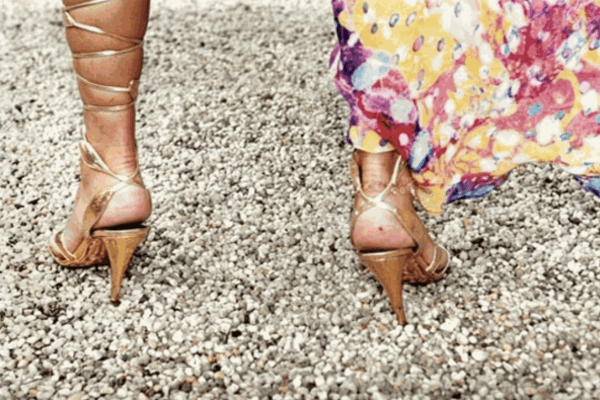The surface is gorgeous, simply gorgeous, darling! Brilliantly cibachromed, oozing color and pain, blood-glazed. Yes, the faces are cut off or the bosoms are soli or the high heels are your whole point of reference—images that are simultaneously violent and depersonalized, jarringly tilted yet somehow containing a fearsome symmetry. There can be only one explanation for such politically charged aesthetic disjunction—you, dear viewer, are drunk! Which is super fine! Because! Everybody else at this party is too.
Welcome to the (way) High (over the top) Society Party of Jessica Craig-Martin, whose lush photographs of lushes and pals transfer a sense of tipsiness to all who take a look. Here is where faces are cropped to protect the none-too-innocent. Where extreme close-ups both objectify and abstract the tuxedo and tiara set. Of the art world, by the art world and for the art world, there’s also a way in which the work of Craig-Martin has nothing at all to do with the art world. She shares with Nan Goldin’s documentation of the opposite end of the downtown art spectrum a breathtaking ability to totally load an image with deep political content and then, the more you look, the more the aesthetic dimensions of the piece begin to grab center stage and hold. You succumb to the shapes and colors and dynamism, the phantasmagoria of a plate of oysters, a poached salmon’s glassy eye, a charred lamb rack on a serving plate looking all the world like a drought-killed sheep skeleton by the side of the road.
Craig-Martin, whose day jobs are as a staff photographer for the New York Times and Harper’s Bazaar, among other publications, shoots fast and on the fly. She is usually in the midst of witty repartee as she snaps away, her persona totally engaged and at ease in whatever glam scene comes her way, her artist self clickclickclicking. Flirting, dancing between drink trays and gilded moshing networkers, she unobtrusively documents everything in the room. She wears her camera like a piece of jewelry, rarely bringing it between her subjects and herself, and later exposing the scene on the same gallery walls where she shot the portraits a month or so before. Then again, she can take the time to get inside the moment, inside the subject: her terrific shot of Fran Lebowitz for Vanity Fair—alone, bereft and meditative in a huge auditorium—is an iconic photo of the end of the last century.
Read more here


